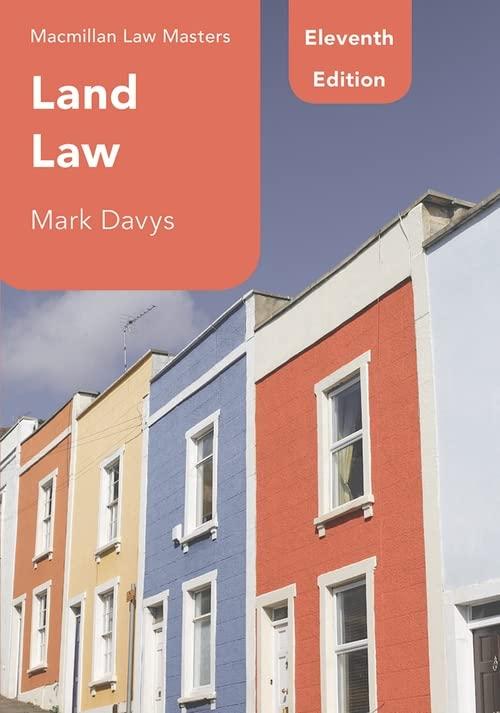Question
Farmer owned two large, adjacent tracts of land, both of which were zoned for agricultural use. Because he was nearing retirement, and wanted to ensure
Farmer owned two large, adjacent tracts of land, both of which were zoned for agricultural use. Because he was nearing retirement, and wanted to ensure his financial well-being during retirement, he decided to sell one of the two parcels. Land prices for residential and commercial development in the area had risen sharply in recent years, and he was sure he would make a large profit in the sale. Developer approached Farmer seeking to buy one parcel for a residential development. They eventually agreed that Developer would buy the eastern parcel, which fronted the main road, and that Farmer and his successors would not develop his land (the western parcel) for 20 years.
The purpose of the agreement was to preserve open space for the future homeowners in the eastern parcel. The deed, with this agreement, was recorded. To reach his remaining land (the western parcel), Farmer intended to use an existing road that went from the main road through the eastern parcel to the western parcel. The parties discussed and agreed upon this arrangement for Farmer's use of the access road, but did not reduce it to writing. Farmer's remaining parcel (the western parcel) was bordered by a regional park to the north and west, and a housing development to the south.
The relevant ordinances governing the housing development to the south prohibited commercial or agricultural vehicles from using roads in the development except for deliveries in the development. There was no road from the western parcel into the park (indeed, there was a fence separating the parcel and the park). For these reasons, Farmer has always used the access road through the eastern parcel to reach the main road. Developer obtained the necessary rezoning for single-family housing and began construction. He also established a Homeowner's Association to manage the common areas (sidewalks, roads etc.) and establish rules for the community.
Almost immediately after the purchase, Developer realized that having farm vehicles regularly pass through his new residential development would hurt sales. He asked Farmer to find another route, but when Farmer refused, he told Farmer he could not use the road and put up a fence at the boundary line blocking Farmer's access. Farmer tore down the fence and continued to use the road. Farmer soon died (he never got to enjoy retirement), and his three children inherited the property. One of them wanted to continue to farm the land, but the other two were eager to sell the land. The children discovered that one row of houses was situated across the property line and informally notified the homeowners and the Association of this problem, although they have not yet made a specific demand.
Now, 4 years after the initial purchase of the eastern parcel, the parties seek legal advice. 1. The homeowners want Farmer's children barred from using the road through the development (the old eastern parcel). Please discuss Farmer's children's legal rights, remedies, and liabilities with respect to the access road. 2. Several of the farmer's children want to sell the land to another developer (Developer II) and they want to know whether or not the restriction in the deed to the first developer is binding on them (and Developer II, assuming the sale goes through).
Under common law in the United States of America. Not state-specific laws. Real property course is currently dealing with land use regulations, easements, licenses, and real covenants.
Step by Step Solution
There are 3 Steps involved in it
Step: 1

Get Instant Access to Expert-Tailored Solutions
See step-by-step solutions with expert insights and AI powered tools for academic success
Step: 2

Step: 3

Ace Your Homework with AI
Get the answers you need in no time with our AI-driven, step-by-step assistance
Get Started


